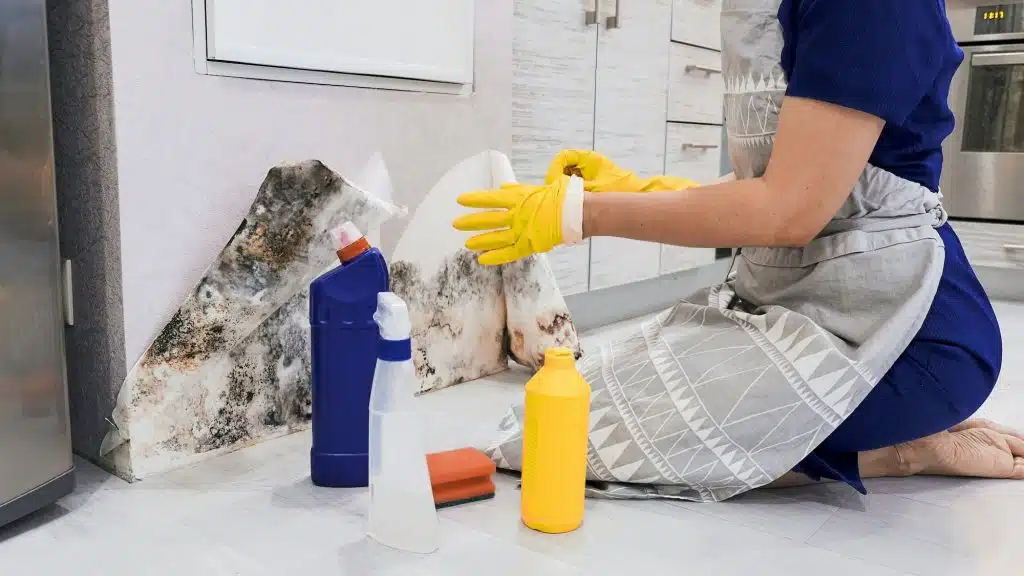
Six Easy Ways to Clean Grout
Cleaning grout is an important part of maintaining your tiled areas. Grout can get dirty and stain if you don’t clean it on a regular basis, and if you’ve got tiles in your house that are looking a little worse for wear, you’ll want to make sure you keep them looking their best. If you don’t have the time or money to hire a professional, there are several easy ways to do it on your own.
Cleaning grout with a homemade cleaner
If your tile is looking dirty, you may want to use a homemade cleaner. A homemade grout cleaner is a great way to get your tile floors sparkling again. The process can be quite simple.
Depending on your needs, you can make a grout cleaner with common household ingredients. It’s best to clean the tile in small sections. You might have to wait a little while to see if the homemade cleaner works.
Using a vinegar solution will break up soap scum and mineral deposits. Vinegar also cuts down on airborne germs.
In addition to the vinegar, you can use baking soda and hydrogen peroxide to clean your grout. These can be sprayed directly onto the grout or spread with a scrubbing brush. When they’re wet, they’ll form a paste.
The natural cleaners are a great alternative to the harsher chemicals found in commercial grout cleaning products. This method will save you time and money.
While it’s not exactly an all-in-one cleaner, the best grout cleaners do include a scrubbing brush and a damp cloth. For cleaning large areas, it’s wise to invest in a mop.
Use a specialist chemical grout cleaner
The grout between your tiles helps to keep them together and prevents the edges from chipping. When it becomes dirty and soiled it detracts from the look of your floor. It is important to clean it on a regular basis to maintain its appearance.
If you want to restore the color and shine of your grout, you can use a specialist chemical grout cleaner. These cleaners will remove any stubborn stains and mould. They also contain anti-fungal properties that can help to prevent fungus from growing on your grout.
Before using any cleaner, it is a good idea to make sure that it is safe to use on your tiles. You can check the label on the package for any potential hazards. Some cleaners have acidic ingredients that can react with concrete in the grout. To be safe, you should follow the directions on the package.
Grout is a porous material that absorbs liquids and grime easily. Therefore, it should be sealed tightly after use. This will prevent it from absorbing additional stains.
Steam clean your grout
There are plenty of ways to steam clean your grout to restore its old glory. You can purchase a commercial product or make your own at home. A cleaner made with distilled water will ensure that mineral and hard water won’t enter the grout.
Grout cleaners can be purchased at home centers or rental outlets. Make sure to read the instructions carefully before using a new steam cleaner. Some units are made for tile, while others are meant to remove stubborn stains.
If you don’t have a steam cleaner, you can clean your grout with a toothbrush and a bit of vinegar. This may not be as effective as a professional product, but it can still be effective.
Steam cleaning your grout is also a good way to remove any traces of soap scum that are visible on your shower walls. Dirt and mould can also build up in depressed areas of your grout.
It can be difficult to get rid of the mould in your shower, but you can remove it with bleach. However, it’s best to apply the bleach on a wet surface, with the window open. Leave it for thirty minutes, then rinse it thoroughly.
Sand and seal grout
The grout in your shower is a mixture of sand, cement, and water. It helps keep your tiles in place and gives your bathroom an attractive finish. However, the grout can eventually wear out or become stained.
If your grout is unsealed, it can absorb moisture from your feet and bacteria from your body. This can lead to discoloration, mildew, and even odors. Therefore, it’s important to seal it regularly.
You can remove stains on your grout by sanding it with fine grade sandpaper. If you want to keep the original color of your grout, you can use a color sealer. These sealers are available in various colors to match your tile.
If you have sanded your grout, it’s important to make sure it’s clean before applying the sealer. You can get the right sealer by checking the manufacturers’ instructions. There are several types of sealers, but most are penetrating. Penetrating sealers don’t change the color of your grout, and they are effective in preventing long-term water damage.
If all else fails — regrout your tiles
The regrouting of your tiled surfaces is a great way to make them look like new. A new set of tiles can make a drab bathroom look glamorous again.
If you’re considering the idea of regrouting your bathroom or kitchen tiled surfaces, you’ll want to be sure you’re ready for the task. There are a few things to consider before you get started, including the material you’ll use, the type of grout you’ll be using, and the area of your home you plan on re-grouting.
One of the simplest ways to regrout your tiles is by hiring a professional. You’ll find these guys charging anywhere from $10 to $25 per square foot. These professionals can get your bathroom looking shiny and new in no time.
When choosing the best grout for your needs, make sure you read the instructions carefully. Don’t forget to check for any additional water requirements on the product’s packaging. Otherwise, you might end up with a runny mess.
A proper regrouting job will take some time, but the results are well worth the effort.
Can you add new grout over old grout?
When you are putting in a new floor, wall or countertop, you can use grout to make the surface more resistant to water damage. You can also put it to use in repairing damaged areas. However, before you apply the new stuff, you need to be aware of some important facts.
First, if you want to install a new grout, you’ll need to remove the old one. The old one will contain minute organic material that can cause problems later on. It may even be discolored.
Second, you need to clean the area to ensure that it is free of debris. This is especially important if you’re dealing with a large room. A handheld vacuum can help you get rid of the dirt.
Third, you’ll need to mix the new grout. To do this, you’ll need a plastic trowel and a little bit of grout. Mixing the mixture to the right consistency will allow you to fill in the gaps.
Finally, you need to let the new grout set for at least 72 hours. If you don’t do this, the new stuff may not stick well.
How often do you need to seal grout?
When it comes to sealing your grout, there are a few things to keep in mind. Sealing the grout can help prevent stains from getting into the tile, and can also protect the tile from bacteria. If you have a high-traffic area, you may want to consider resealing every year. However, if you have a less-used, but still very active area, you may not need to seal as often.
Before you begin, you should clean the grout. You can use a toothbrush to remove stains, and you can use a 50/50 solution of vinegar and water to clean. After you’ve cleaned the grout, you can use a fabric rag to wipe off the dirt.
Afterward, you should let the grout dry for a minimum of twenty-four hours. Depending on the size of the tiles, this may take more time. Keeping the grout dry will allow it to cure properly.
The next step is to apply a coat of the grout sealer. This can be done with a foam paint brush or a small roller. Using a brush will help you evenly apply the product to the surface.



